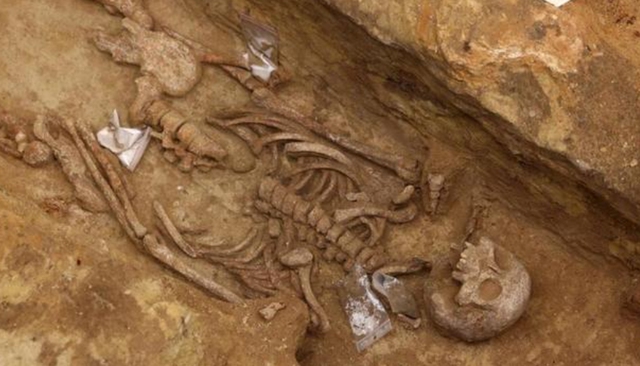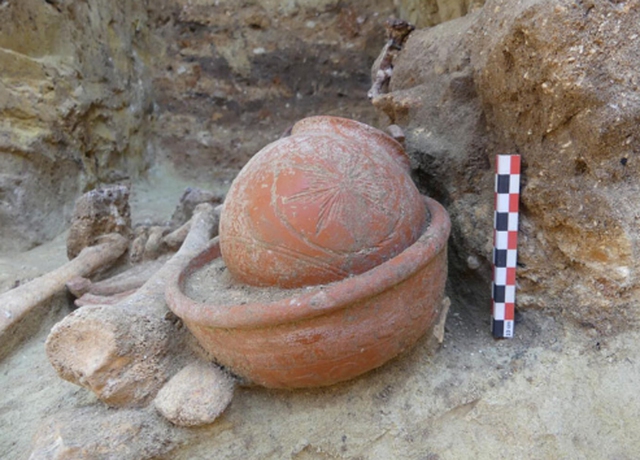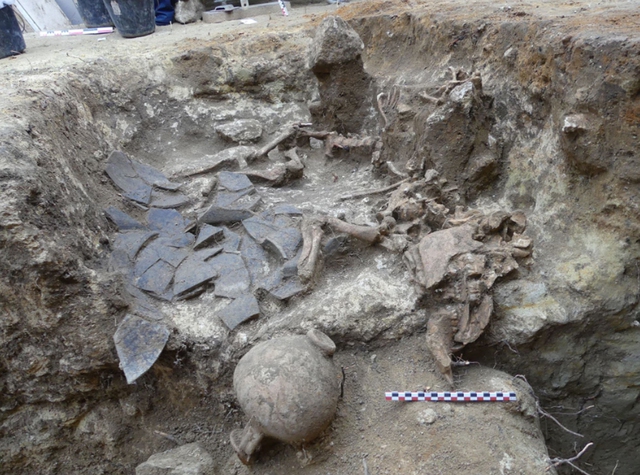Just meters from a busy train station in central Paris, scientists have discovered 50 graves in an ancient cemetery, providing a rare glimpse into life nearly 2,000 years ago in the city. The town of Lutetia is now the capital of modern France.
Somehow, the buried graveyard went undetected when much of the roadworks over the years were carried out, as was the construction of Port-Royal station in Paris in the 1970s.
However, plans to build a new exit for the station prompted an archaeological excavation by the French National Institute for Preventive Archaeological Research (INRAP), covering about 200 square meters of land . The excavation revealed tombs believed to be part of the Saint Jacques necropolis dating back to the 2nd century, the Research Institute said in a press release, according to CBS News .

One of the skeletons unearthed at the ancient cemetery was found a few meters from a train station in Paris
Camille Colonna, an anthropologist at INRAP, told a news conference that there were “strong suspicions” that the site was near the southern cemetery of Lutetia, a town of Gaulish people – ancestral to the French. modern.
The Saint Jacques necropolis is the largest burial ground in the town of Lutetia, and was previously partially excavated in the 1800s. However, at that time only objects considered precious were removed from the burials. grave, many skeletons, burial offerings and other artifacts were left behind.
Colonna said the team was “very excited” to find a skeleton with a coin in its mouth, allowing them to date the burial to the 2nd century AD.
Excavations that began in March 2023 discovered 50 graves, all of which were buried rather than cremated, which was also common at the time.
The remains of skeletons of men, women and children are believed to belong to the Parisii (Gallois people) who lived in Lutetia, when the town on the banks of the Seine was under the control of the Roman Empire.


Items found at the cemetery
AFP
The skeletons were buried in wooden coffins. About half of the remains found in the recent excavation were buried with offerings, such as ceramic cups, dishes and glassware.
Sometimes a coin was placed in the coffin, or even in the mouth of the dead person. This was a common burial custom at the time called “Charon’s obol”. In Greek mythology, Charon is the ferryman of Hades – the god of the underworld, the eldest son of Titan Cronus and Rhea. Out of fear of being overthrown, Cronus swallowed all his children alive when they were born. The coin was considered a bribe to carry the souls of the dead across the river.
Archaeologists also found shoe prints inside the tombs. They identified them based on the remains of small nails used in shoe soles. According to INRAP, some of the dead appeared to be buried with shoes on their feet, while others appeared to be buried with shoes placed on either side of the body inside the grave.
Colonna confirmed the shoes were placed “at the feet of the dead or next to them, like an offering”.
Jewelry, hairpins and belts were also discovered with the graves, while the entire bones of a pig were discovered in a pit where animals were believed to have been sacrificed to the gods.
Unlike the excavation in the 1800s, this time the team plans to excavate everything from the cemetery for analysis.
“This will allow us to understand the lives of the Parisii through funeral rituals, as well as their health by studying DNA,” Colonna said.
Dominique Garcia said Paris’s ancient history was “generally not well known”, adding that the excavated tombs opened “a window into the world of ancient Paris”.





